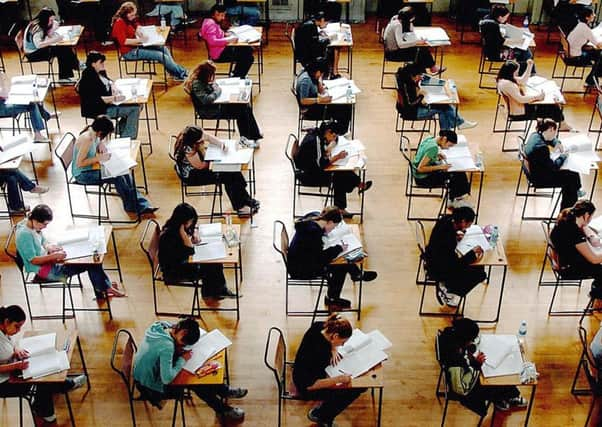Five Leeds secondary schools fail to hit pupils' progress targets


Government figures show the schools fell below a new benchmark that measures students’ achievement over eight GCSE subjects.
The schools listed as under-performing are David Young Community Academy, Leeds City College, Leeds East Academy, South Leeds Academy and Swallow Hill Community College.
Advertisement
Hide AdAdvertisement
Hide AdAll are academies, funded directly by the government and sponsored by trusts, which are independent of the city council.
No schools in Wakefield were measured as under-performing.
Mike Barnett, of London-based Academies Enterprise Trust, which sponsors Swallow Hill College in Wortley, said an Ofsted report published last week had removed its “inadequate” rating of two years ago, but inspectors said the school required improvement.
“The more you go back, the lower the results were. If you look at current progress, the situation is much more encouraging,” Mr Barnett said.
A spokesman for Leeds City College, said all students had gone on to either further education, employment or training.
Advertisement
Hide AdAdvertisement
Hide AdShe added: “Many of these students come to the college with complex needs and a difficult set of circumstances.”
A spokesman for Delta Academies Trust, which took over South Leeds Academy in 2015, said “rapid improvement” at the school was reflected in its latest Ofsted report.
The city’s top performing schools were Farnley Academy and Rodillian Academy, with Allerton High School the top-rated council-run secondary.
For the first time this year, schools have not been judged on the number of pupils scoring at least five C grades at GCSE, including in English and maths. Ministers have introduced a new headline measure called “Progress-8”, which looks at the progress pupils make from the end of primary school to the end of secondary school. It compares pupils’ results with the achievements of other youngsters with the same prior attainment, and measures performance across eight qualifications.
Advertisement
Hide AdAdvertisement
Hide AdEight schools in Leeds – six of them academies – were rated “above” or “well above” the national average on the Progress-8 measure. But the district as a whole fell below the threshold, with just under 60 per cent of students recording five or more GCSE passes at grade C or above, and 22.9 per cent achieving the English Baccalaureate in English, maths, sciences, a language and history or geography.
Leeds Council said the city had performed better than other “core cities”.
Coun Lisa Mulherin, executive member for children and families, said more than three-quarters of the district’s secondaries were rated “good” or “outstanding” by Ofsted.
She said: “Most young people in Leeds continue to enjoy a good quality of teaching. We know there is still more to do to raise standards to that level in every school and it is important to note that responsibility for the provision of school improvement within academies lies with the academy’s sponsor. As a local authority we can only provide that support if the sponsor buys the service from us.”
Advertisement
Hide AdAdvertisement
Hide AdShe also blamed “relentless government funding cuts” which, she said, had led many local authorities to reduce their services.
Schools Minister Nick Gibb said the figurers proved the “attainment gap” between disadvantaged and all other pupils had narrowed by 7 per cent since 2011.
But Malcolm Trobe, of the Association of School and College Leaders, said that although Progress-8 was a “fairer measure of school performance”, it had “teething problems”, and must be treated with caution.
He said: “Its biggest weakness is that the score of a school is disproportionately affected by as few as one or two pupils recording anomalous results.”